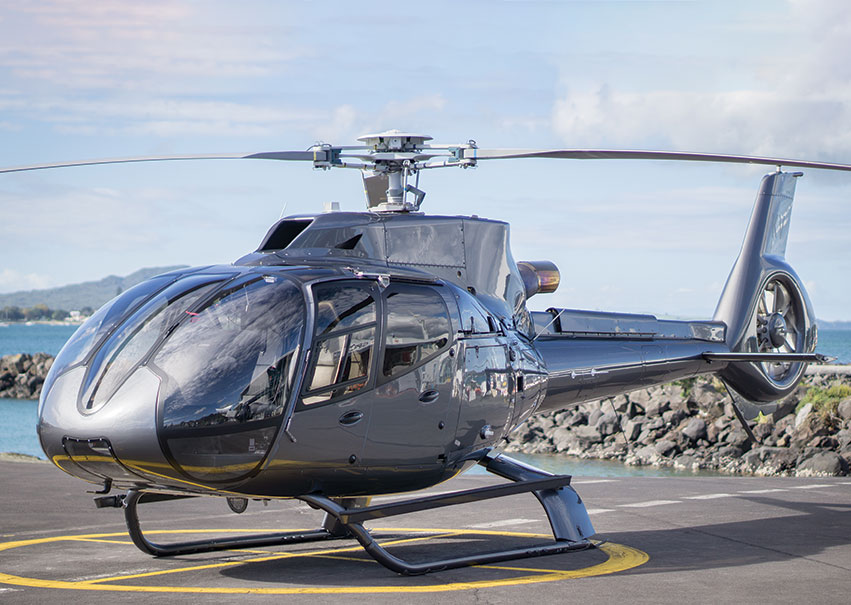The Importance of Crash-Resistant Fuel Systems in Helicopter Safety
In the world of helicopter aviation, safety remains the top priority for operators, manufacturers, and regulatory bodies alike. While advancements in technology have significantly improved flight reliability, one critical area that continues to require attention is fuel system crashworthiness. Recognizing this, Airbus Helicopters Inc. (AHI) has taken a major step forward by offering free crash-resistant fuel system (CRFS) retrofit kits for specific helicopter models registered in the U.S. In this guide, we will explore the significance of CRFS, what this new initiative entails, and why operators should take immediate action to upgrade their aircraft.
Understanding Crash-Resistant Fuel Systems
A CRFS is designed to prevent post-crash fires, one of the leading causes of fatalities in helicopter accidents. These systems incorporate self-sealing fuel bladders, breakaway fittings, and improved impact resistance to reduce the likelihood of fuel leaks in the event of a crash. Despite regulatory efforts, many helicopters still operate without CRFS, exposing occupants to unnecessary risks.
Before 1994, CRFS was not a mandatory feature in civilian helicopters. However, as data emerged highlighting the dangers of post-crash fires, the Federal Aviation Administration (FAA) introduced new standards requiring CRFS for all newly certified rotorcraft. Unfortunately, this requirement did not apply retroactively, leaving thousands of older aircraft in operation without these critical safety enhancements.
Airbus’ Free Retrofit Initiative | Enhancing Fleet Safety
To encourage the adoption of CRFS, Airbus Helicopters Inc. has announced a program offering retrofit kits free of charge for U.S.-registered AS350 B3, H125 (AS350 B3e), and EC130 B4 helicopters. This decision comes after years of legal battles and advocacy from industry professionals, safety experts, and victims’ families urging Airbus to make CRFS adoption more accessible.
According to Airbus, the retrofit installation requires approximately 150 to 200 labor hours, depending on the aircraft configuration. To minimize downtime, operators can choose to install the kits themselves or bring their helicopters to an AHI-authorized service center. The only stipulation is that the retrofit must be completed in a timely manner.
This move aligns with Airbus’ stated commitment to safety. In a letter to customers, Airbus emphasized that "Safety and Quality are the foundation of business at Airbus and come first in everything we do. Consequently, improving the crashworthiness of Airbus helicopters in the event of an accident is of paramount importance."
Why Operators Should Act Now
While Airbus has previously offered incentives for CRFS adoption—including selling kits at cost and providing training credits—many operators have remained hesitant due to cost and operational constraints. However, with retrofit kits now available for free, there is no financial barrier preventing operators from upgrading their fleets.
Here are key reasons why every eligible operator should take advantage of this initiative:
Protecting Lives: CRFS has been proven to prevent post-crash fires, significantly increasing survivability in helicopter accidents. A single investment in safety today can save lives tomorrow.
Minimizing Legal and Liability Risks: Post-crash fires have resulted in multi-million-dollar lawsuits against helicopter manufacturers and operators. Ensuring compliance with modern safety standards can reduce legal exposure.
Preserving Aircraft Value: Aircraft equipped with CRFS are more attractive in the resale market, as buyers prioritize safety compliance.
Regulatory Preparedness: While CRFS retrofits are not currently mandated for older aircraft, regulatory bodies may impose stricter requirements in the future. Proactive compliance positions operators ahead of potential regulations.
Looking Ahead | A Call for Global Adoption
Despite Airbus’ significant step forward, the CRFS initiative currently applies only to U.S.-registered helicopters. This limitation has raised concerns among international operators who also face the risks associated with post-crash fires. Safety advocates continue to push for broader implementation, urging Airbus to extend the free retrofit program worldwide.
While the U.S. legal system has played a key role in driving accountability, the aviation industry as a whole must work toward ensuring that no helicopter flies without fundamental crash-resistance measures. Operators outside of the U.S. are encouraged to engage with their regional Airbus representatives to explore options for adopting CRFS retrofits.
Final Thoughts | Safety as a Shared Responsibility
Helicopter operators have a unique opportunity to enhance flight safety without the financial burden typically associated with major retrofits. By taking advantage of Airbus’ free CRFS retrofit program, operators can ensure the highest level of protection for their passengers, crews, and assets.
For those in the helicopter maintenance and operations industry, the choice is clear: retrofitting with CRFS is not just a regulatory consideration—it is an ethical obligation. Whether flying for commercial transport, emergency medical services, or sightseeing tours, every flight should be as safe as possible.
To schedule a retrofit or learn more about the program, operators should contact their Airbus customer support manager as soon as possible. The opportunity to implement life-saving technology at no cost is rare—seizing it now is the right move for any responsible operator committed to safety.
